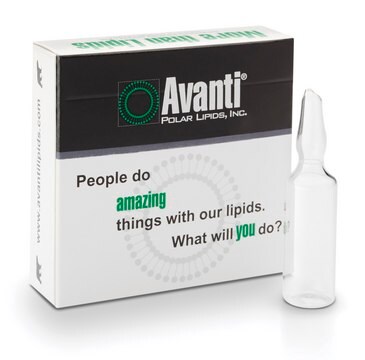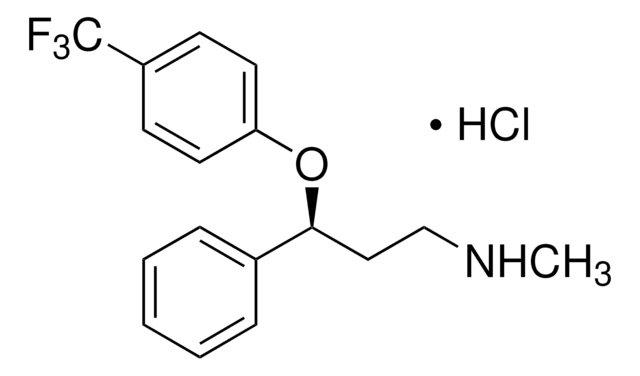Key Documents
870608H
Avanti
4-HNE-dimethylacetal
Avanti Research™ - A Croda Brand 870608H, hexane solution
Synonim(y):
(E)-4R-hydroxynonenal-dimethylacetal (Each vial contains 6.8mg which yields ~5.2mg 4-HNE after deprotection)
About This Item
Polecane produkty
Postać
hexane solution
opakowanie
pkg of 1 × 1 mL (870608H-5mg)
producent / nazwa handlowa
Avanti Research™ - A Croda Brand 870608H
stężenie
6.8 mg/mL (870608H-5mg)
typ lipidu
phosphoglycerides
bioactive lipids
Warunki transportu
dry ice
temp. przechowywania
−20°C
ciąg SMILES
CCCCC[C@@H](O)/C=C/C(OC)OC
Opis ogólny
The dimethylacetal derivative is a more stable form of 4-HNE which is good for long term storage of the compound during use. It can be easily converted to 4-HNE in the presence of acid.
Opakowanie
Informacje prawne
Hasło ostrzegawcze
Danger
Zwroty wskazujące rodzaj zagrożenia
Zwroty wskazujące środki ostrożności
Klasyfikacja zagrożeń
Aquatic Chronic 2 - Asp. Tox. 1 - Flam. Liq. 2 - Repr. 2 - Skin Irrit. 2 - STOT RE 1 Inhalation - STOT SE 3
Organy docelowe
Central nervous system, Nervous system
Kod klasy składowania
3 - Flammable liquids
Klasa zagrożenia wodnego (WGK)
WGK 3
Temperatura zapłonu (°F)
-14.8 °F - closed cup
Temperatura zapłonu (°C)
-26.0 °C - closed cup
Certyfikaty analizy (CoA)
Poszukaj Certyfikaty analizy (CoA), wpisując numer partii/serii produktów. Numery serii i partii można znaleźć na etykiecie produktu po słowach „seria” lub „partia”.
Masz już ten produkt?
Dokumenty związane z niedawno zakupionymi produktami zostały zamieszczone w Bibliotece dokumentów.
Klienci oglądali również te produkty
Nasz zespół naukowców ma doświadczenie we wszystkich obszarach badań, w tym w naukach przyrodniczych, materiałoznawstwie, syntezie chemicznej, chromatografii, analityce i wielu innych dziedzinach.
Skontaktuj się z zespołem ds. pomocy technicznej













